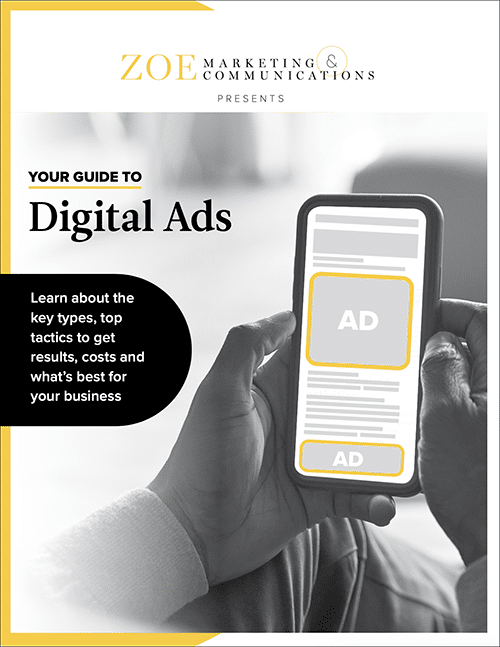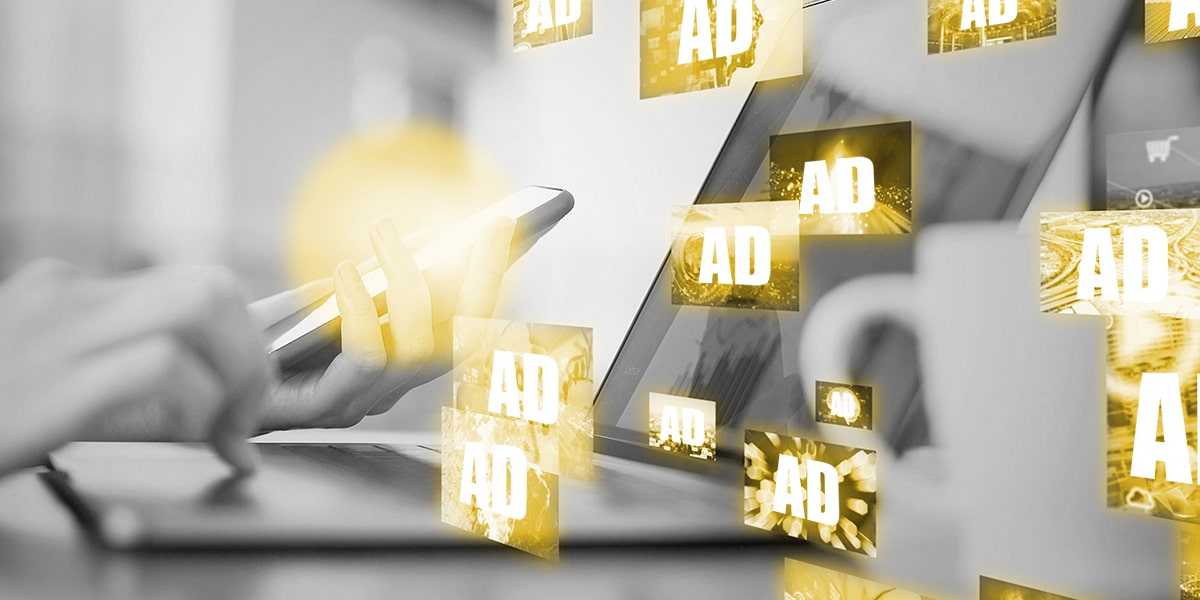
Download Your Digital Ads Guide
Learn how digital ads can help your business, including the tools, techniques and strategies to create successful campaigns.

If you’ve wondered whether digital ads are worth it, the answer is almost always yes. Consider this: People are 155% more likely to search for your brand after seeing a display ad. And digital ads can boost brand awareness by 80%.
Still, digital advertising can feel overwhelming. Zoe Marketing & Communications has helped businesses decide how to use this tactic since 2020.
Here, you’ll gain a clearer picture of how digital ads fit into your marketing strategy, from benefits and types to typical results, costs and challenges.
Learn how digital ads can help your business, including the tools, techniques and strategies to create successful campaigns.
Digital ads drive traffic, but results vary by industry. Click-through rate (CTR) is a key metric:
For most ads, the average CTR is 1.9%. Also, note that buyers cycle through three stages, so it’s important to have a variety of ads:
Your ads should run consistently and refresh every 60-90 days for the best results and to avoid ad fatigue.
Budget varies by platform.
Digital ads require consistency. Random, short-term campaigns rarely work. Many businesses reach a decision point: “Do we invest time to learn or hire an expert?”
An agency can:
Digital ads keep you competitive and visible to the right audience. This blog covered six key benefits, three major ad types, expected results, costs and challenges.
If you’re ready to make digital ads work for you, talk to us at Zoe Marketing & Communications. Our team can help you build, manage and optimize ad campaigns for maximum results.
To learn more about different ad types, explore our quick guides:

Learn how digital ads can help your business, including the tools, techniques and strategies to create successful campaigns.
As Zoe Marketing & Communications’ content manager, Kim Kovelle brings over 20 years of writing and editing experience in metro Detroit. She has strong roots in community journalism and a knack for making complicated topics make more sense.
